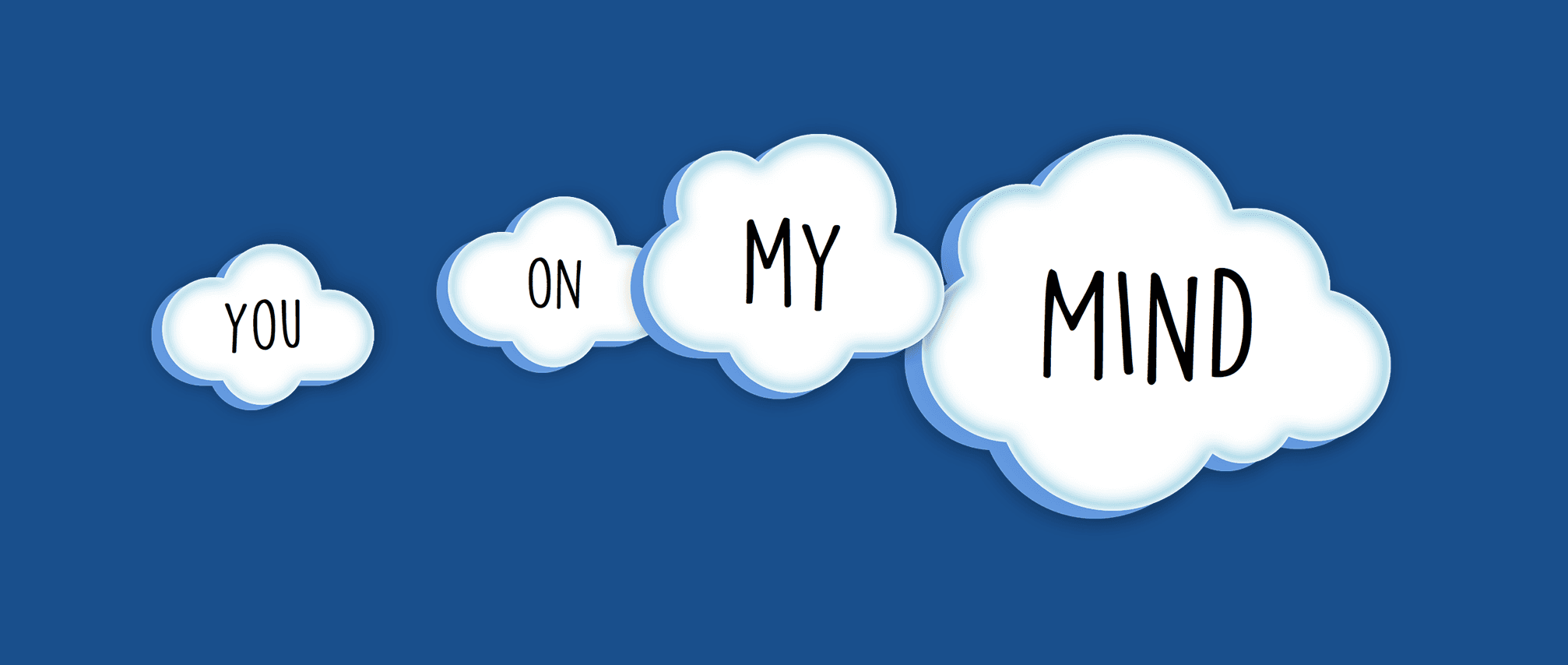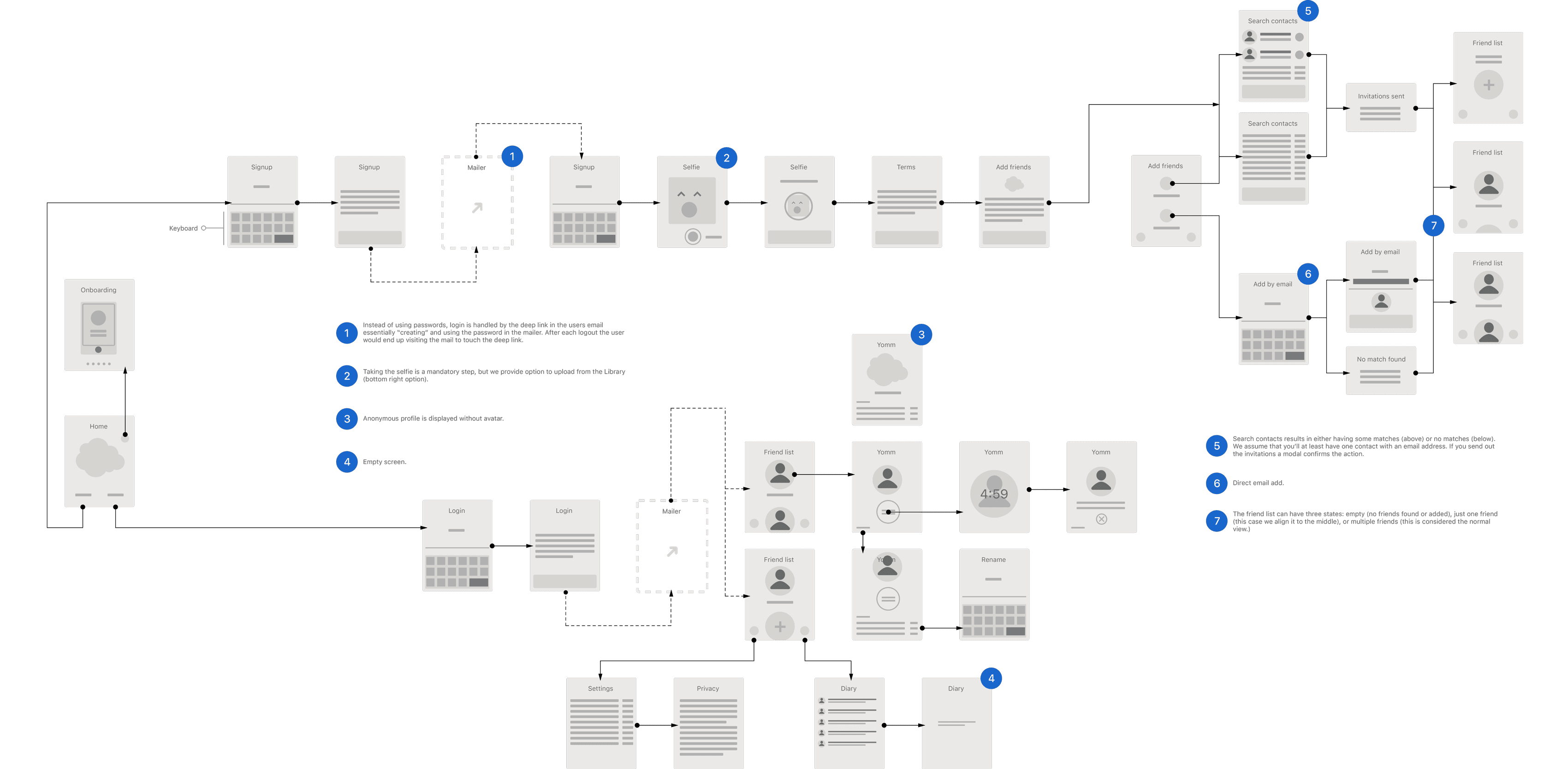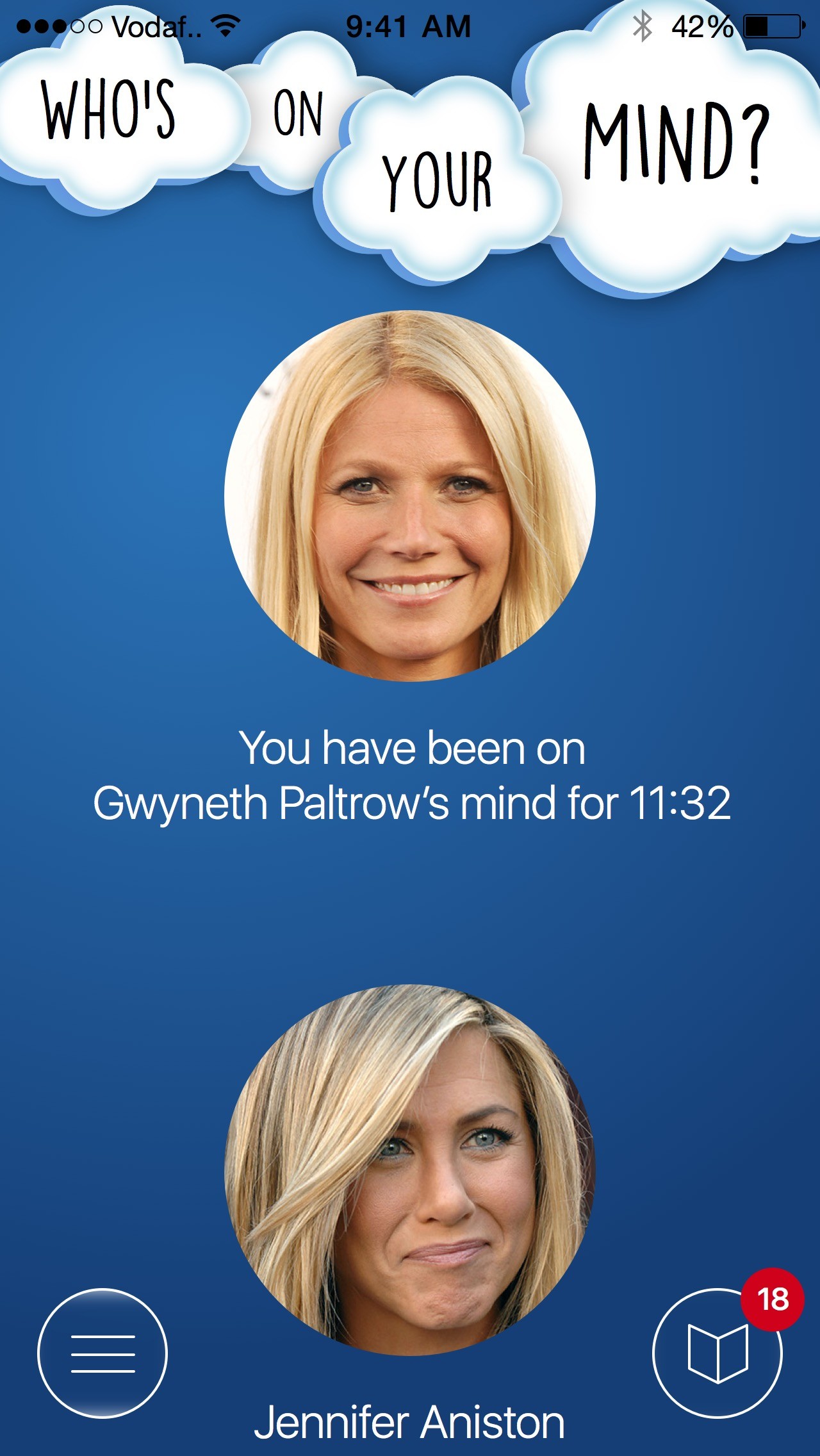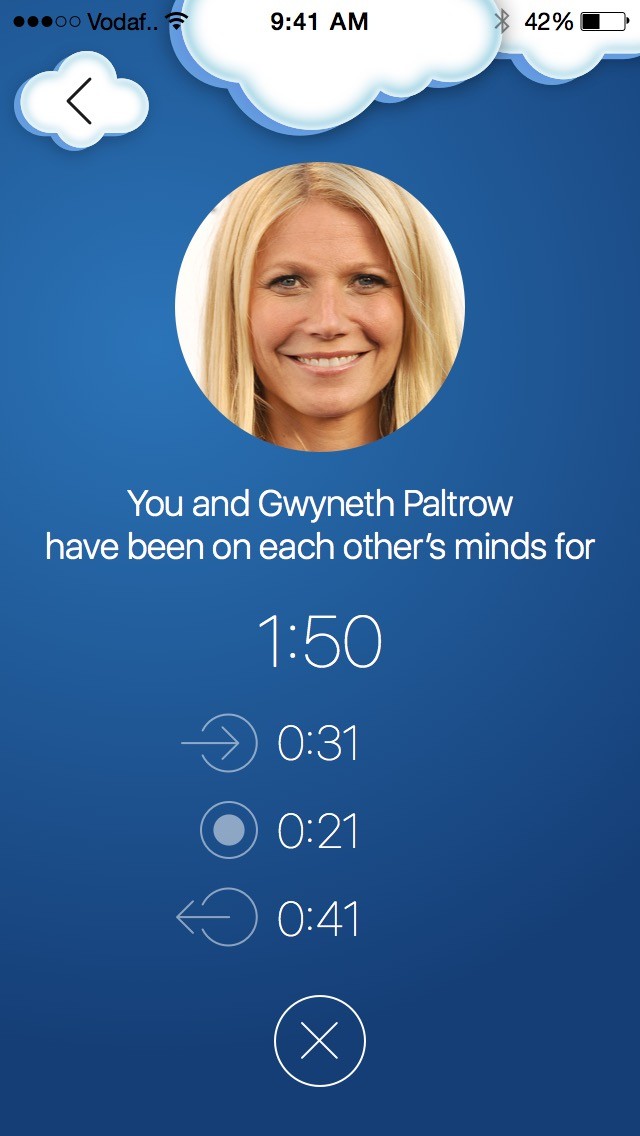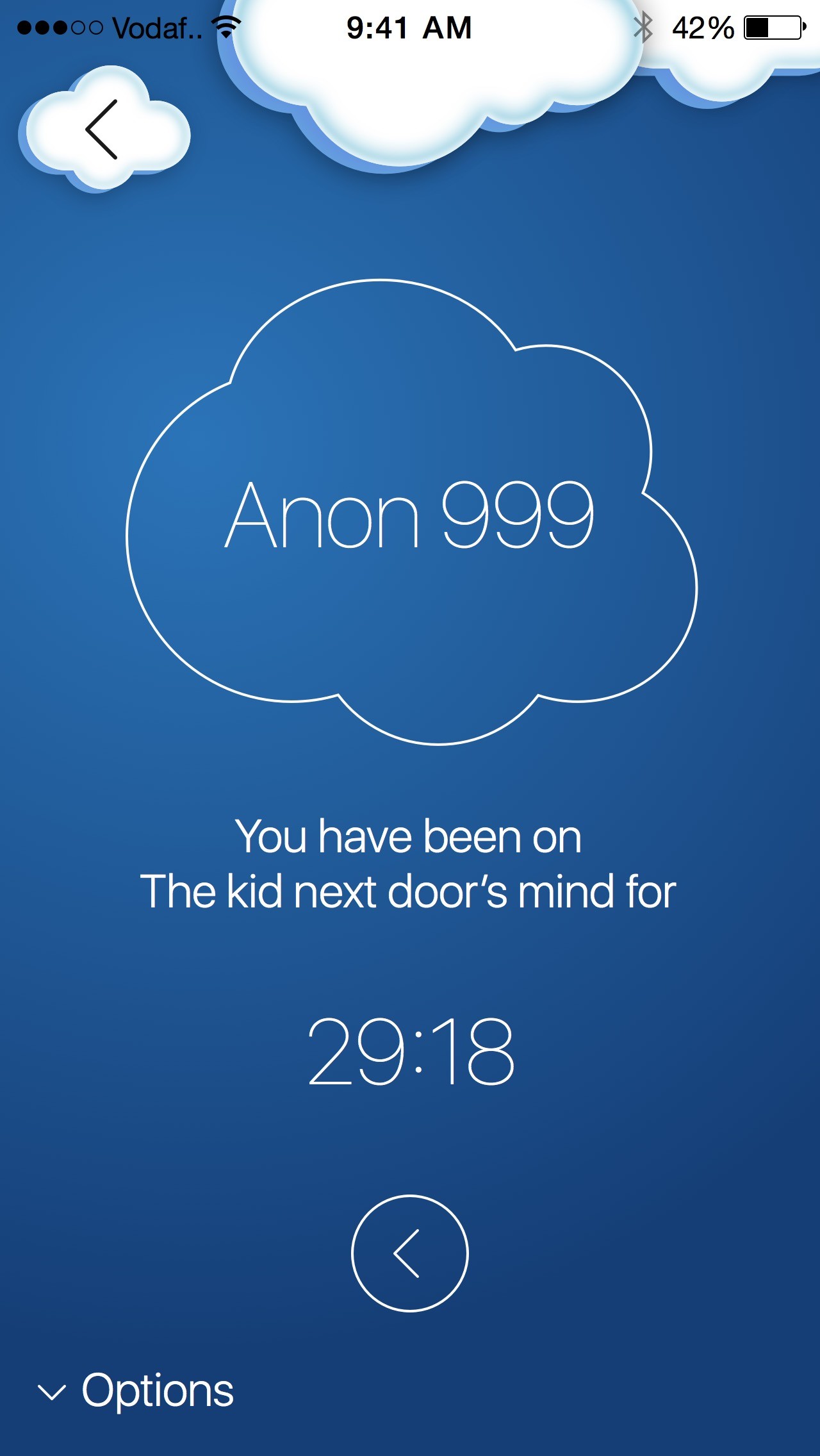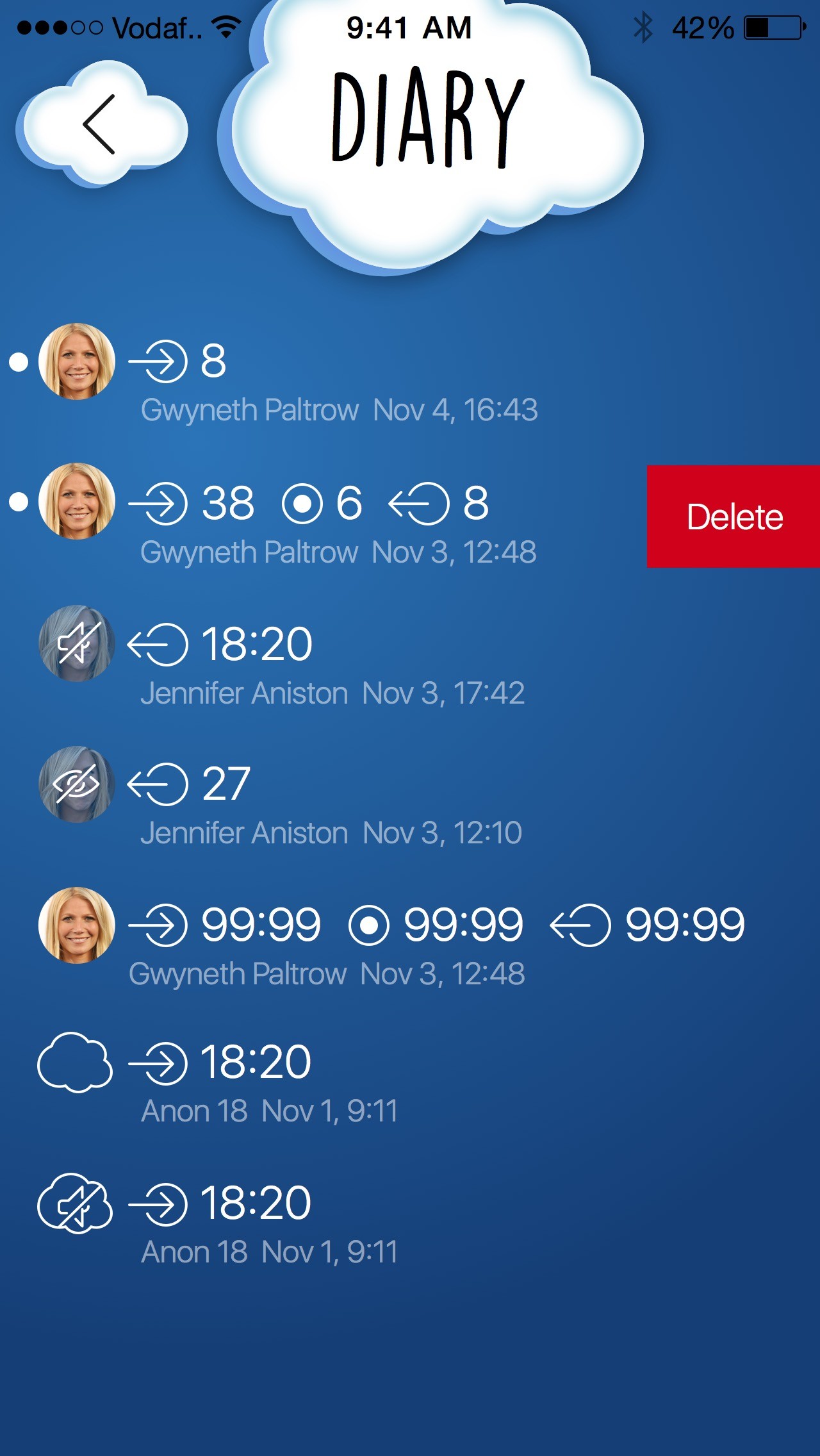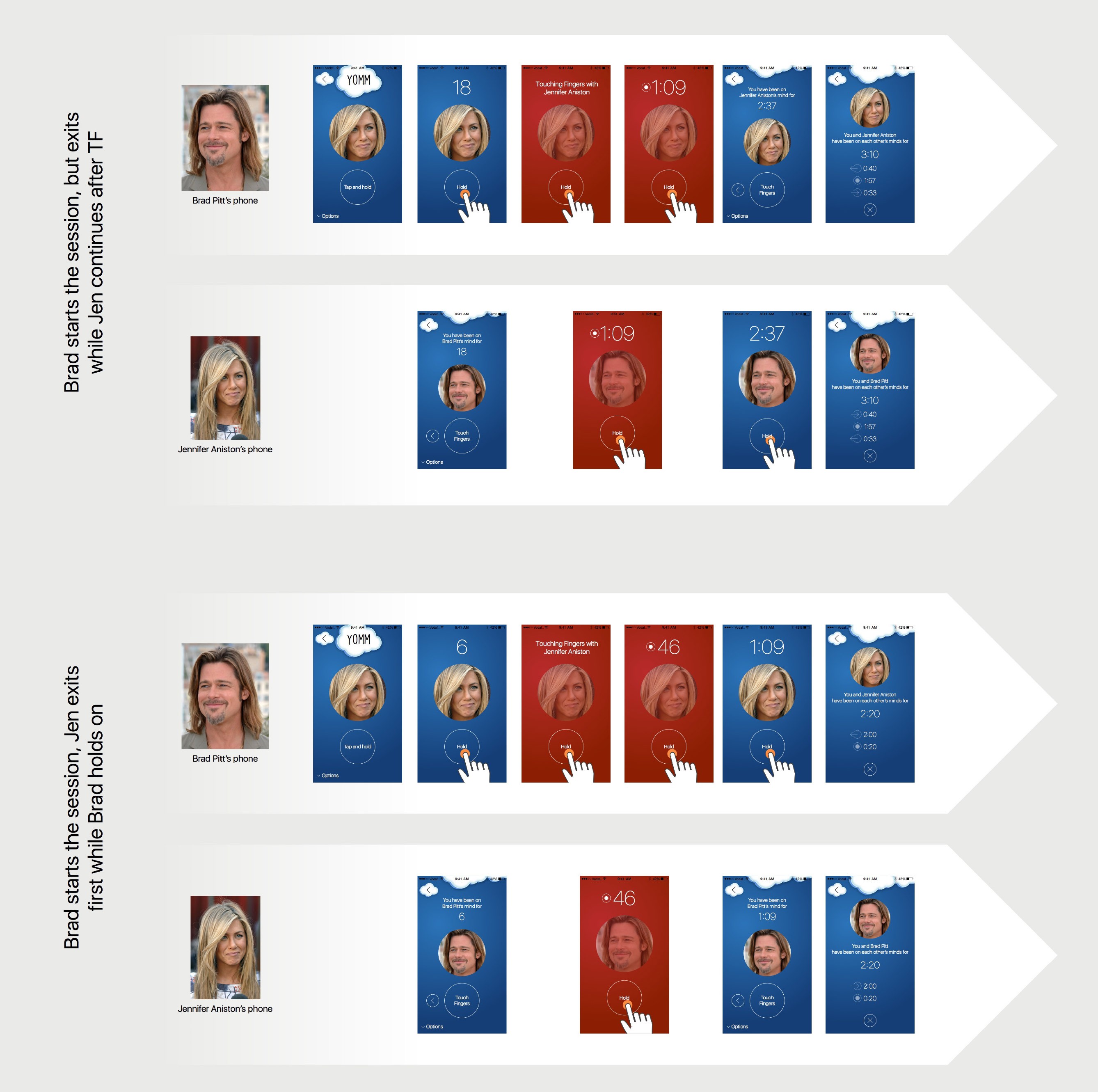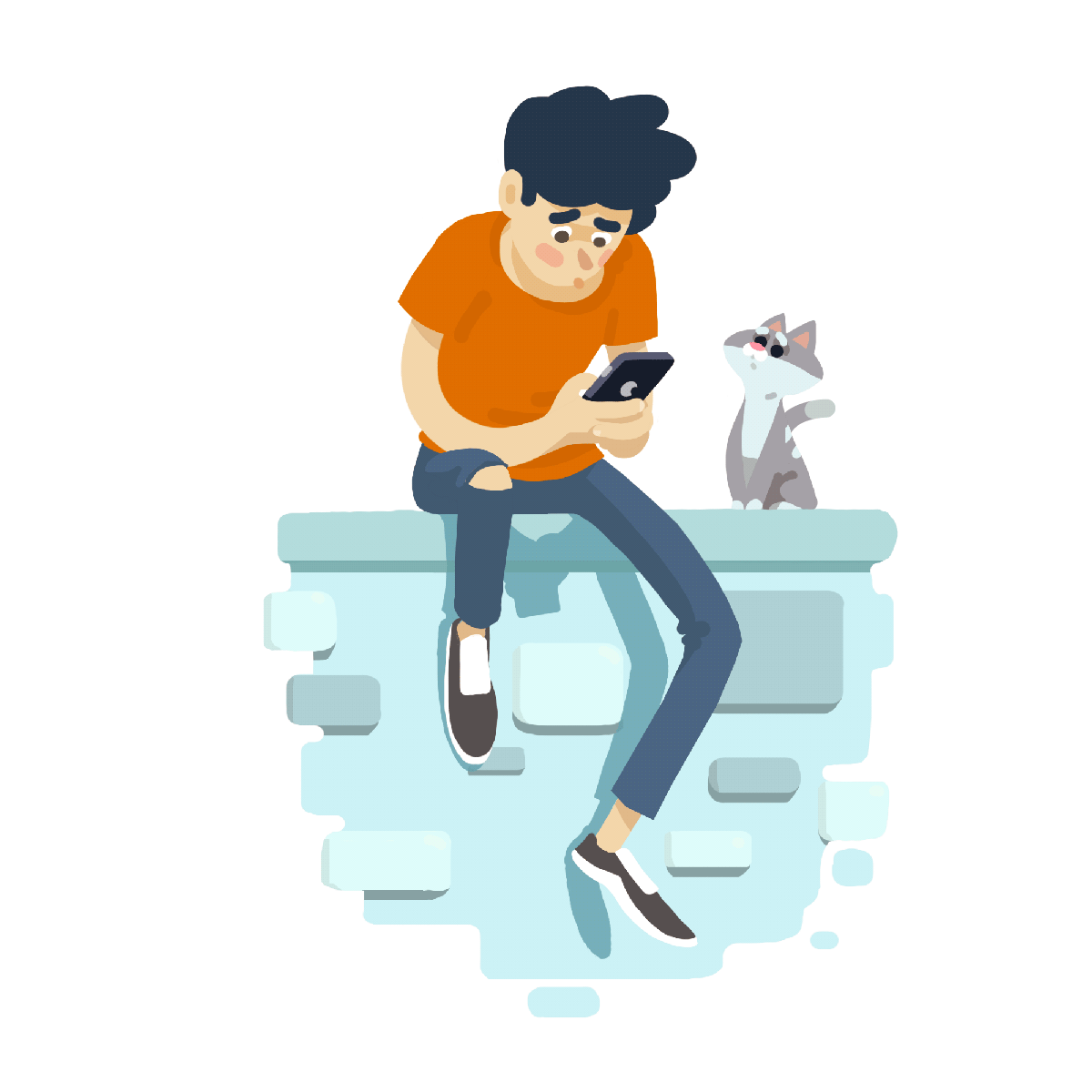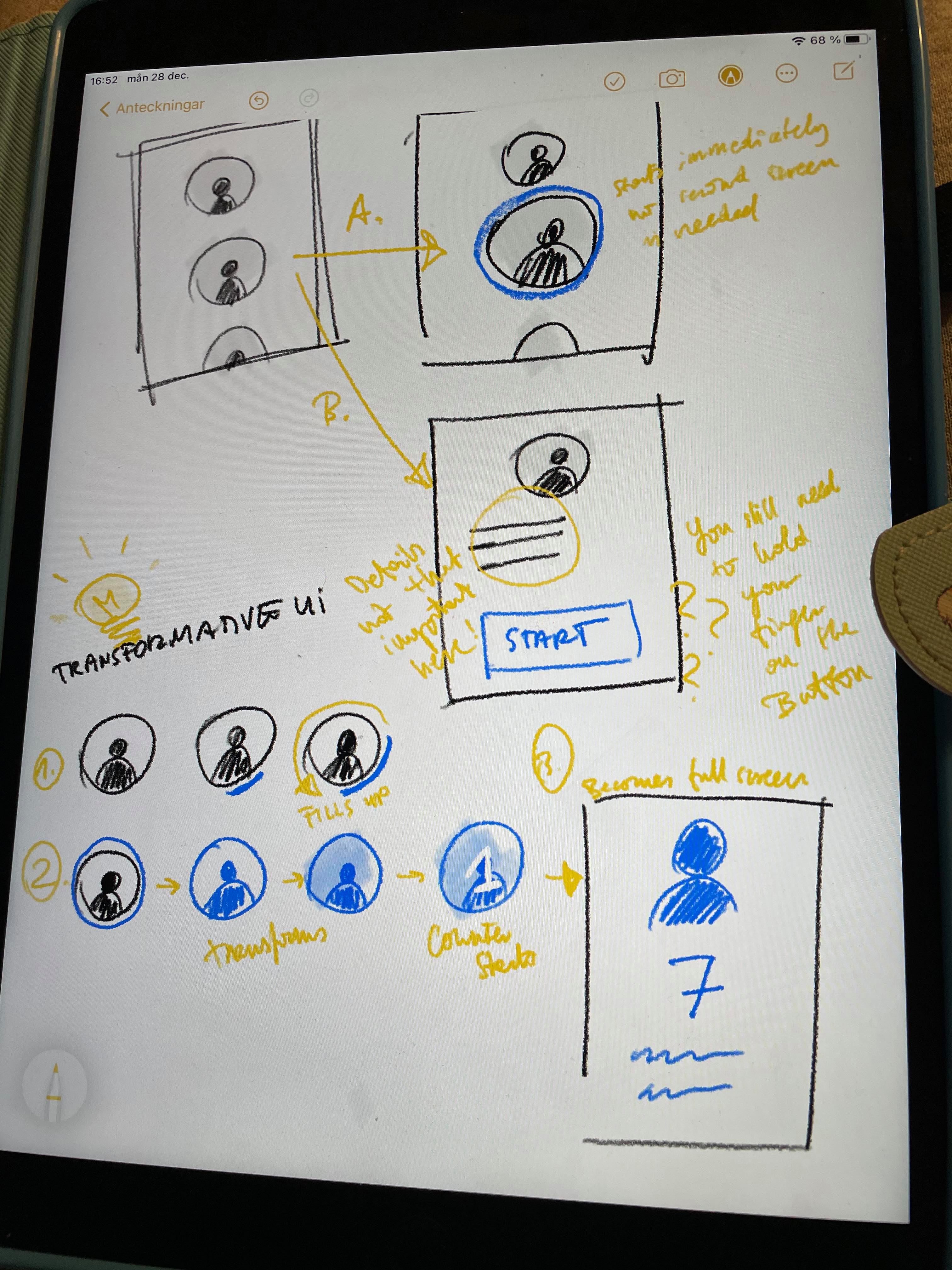The pitch
Sometimes you just want to let someone know that you're thinking about them. Without words, sounds, emojis, or heartbeats.
Your phone gets a notification from a person you know. This notification is alive for as long as the caller keeps a finger on the screen. You're on this persons mind.
You also can hop in to that moment by tapping the screen and performing a simultaneous digital event.
A simple app
From the outside the user journey doesn't seem much: you see your contact list, front and center, you select a person and then initiate a yomm session.
Let's build.
Even just drawing out the basic flow we realized a simple idea will be daunting to execute. (It was indeed.)
Is this a requirement for a first release, or just nice to have?
Testing it
Learnings
I only can speak for myself when I say I made all the mistakes the startup literature already had written:
simultaneous release both on iOS and Android when the user base is non existent
instead of gradually building the user base, focusing on a Big Bang Release, waiting for the effect (in reality this rarely happens this way)
product decisions when it comes to an MVP: what we need now and what can we do later
design and interaction details: what is worth spending time on, what is not
falling in love with an idea and being emotional about it
being afraid of mentioning the app idea for friends fearing it will be stolen
there are usually more opportunities to simplify the product
The app made it into the hands of users, but it had failed to gain traction and we eventually decided to close it down. 😢
